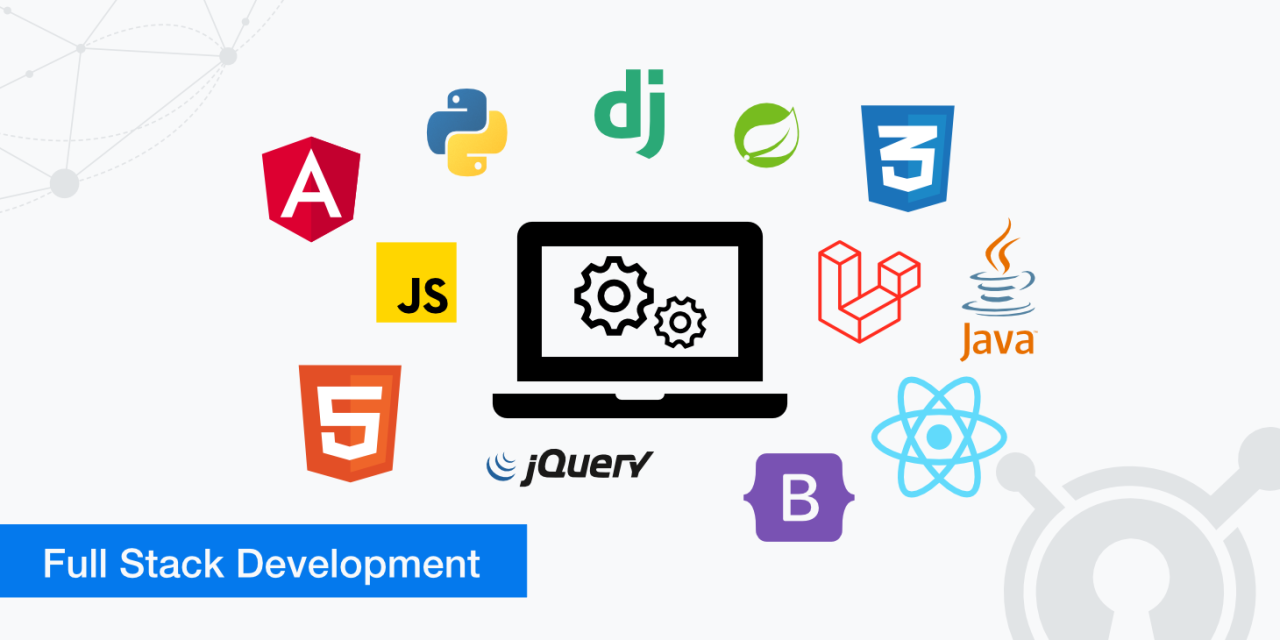Full stack developers are the ultimate web wizards, wielding the power of both front-end and back-end technologies. They’re the architects and builders of entire web applications, seamlessly blending user interfaces with powerful server-side logic. This journey explores the multifaceted world of full-stack development, uncovering the skills, technologies, and career paths that define this dynamic role.
We’ll delve into the core skills needed, comparing front-end and back-end development and exploring popular frameworks like React, Node.js, and various database technologies. We’ll also cover crucial aspects like version control with Git, DevOps practices, and the ever-evolving landscape of full-stack development careers.
Defining “Full Stack Developer”
A full-stack developer is a versatile software professional proficient in both front-end and back-end development. This means they can handle all aspects of a web application, from the user interface to the server-side logic and database.
Core Skill Sets of a Full-Stack Developer
Full-stack developers need a broad skill set encompassing front-end technologies (HTML, CSS, JavaScript, frameworks like React, Angular, or Vue.js), back-end technologies (programming languages like Python, Node.js, Java, or PHP; databases like SQL and NoSQL; and server management), and DevOps practices (version control with Git, CI/CD pipelines).
Front-End vs. Back-End Roles in a Full-Stack Context
Front-end developers focus on the user interface and user experience, ensuring the application is visually appealing and user-friendly. Back-end developers concentrate on the server-side logic, databases, and APIs. A full-stack developer bridges the gap, understanding and working effectively with both sides.
Importance of Full-Stack Developers in Modern Software Development
Full-stack developers are valuable because they can handle various aspects of a project, leading to faster development cycles, better communication between teams, and a more holistic understanding of the application’s architecture. They are particularly useful in smaller teams or startups where specialized roles might be less feasible.
So you want to be a full stack developer? That’s awesome! It’s a challenging but rewarding path. You’ll need to know everything from front-end design to back-end databases. Planning a weekend trip? Check the weather first; there’s a Winter storm warning issued for Kansas City, as weekend travel to might affect your plans.
Once you’ve mastered full-stack development, you can build weather apps to help others avoid similar travel snafus!
Comparison of Full-Stack Developer Specializations
| Specialization | Technologies Used | Typical Applications | Advantages/Disadvantages |
|---|---|---|---|
| MERN (MongoDB, Express.js, React, Node.js) | MongoDB, Express.js, React, Node.js, JavaScript | Web applications, real-time applications, APIs | Advantages: JavaScript-based, efficient, scalable. Disadvantages: Can be less performant for very large applications compared to some other stacks. |
| MEAN (MongoDB, Express.js, Angular, Node.js) | MongoDB, Express.js, Angular, Node.js, JavaScript | Web applications, enterprise applications | Advantages: JavaScript-based, full-stack JavaScript expertise. Disadvantages: Similar performance considerations to MERN for extremely large-scale projects. |
| LAMP (Linux, Apache, MySQL, PHP) | Linux, Apache, MySQL, PHP | Web applications, content management systems | Advantages: Mature technologies, large community support. Disadvantages: Can be less flexible and modern compared to JavaScript-based stacks. |
Front-End Technologies for Full-Stack Developers
Proficiency in front-end technologies is crucial for a full-stack developer. This section covers popular frameworks, UI/UX principles, and responsive design.
Common Front-End Frameworks and Libraries
- React: A JavaScript library for building user interfaces, known for its component-based architecture and virtual DOM.
- Angular: A comprehensive JavaScript framework for building complex web applications, featuring TypeScript, dependency injection, and a robust routing system.
- Vue.js: A progressive JavaScript framework that is easy to learn and integrate into existing projects, offering a balance between flexibility and structure.
Simple User Interface Example with HTML, CSS, and JavaScript
A simple button that changes its text when clicked:
<button id="myButton">Click Me</button>
<script>
const button = document.getElementById('myButton');
button.addEventListener('click', () =>
button.textContent = 'Clicked!';
);
</script>
This uses basic HTML to create a button, JavaScript to add an event listener, and could be styled further with CSS.
Front-End Best Practices: UX/UI Design Principles
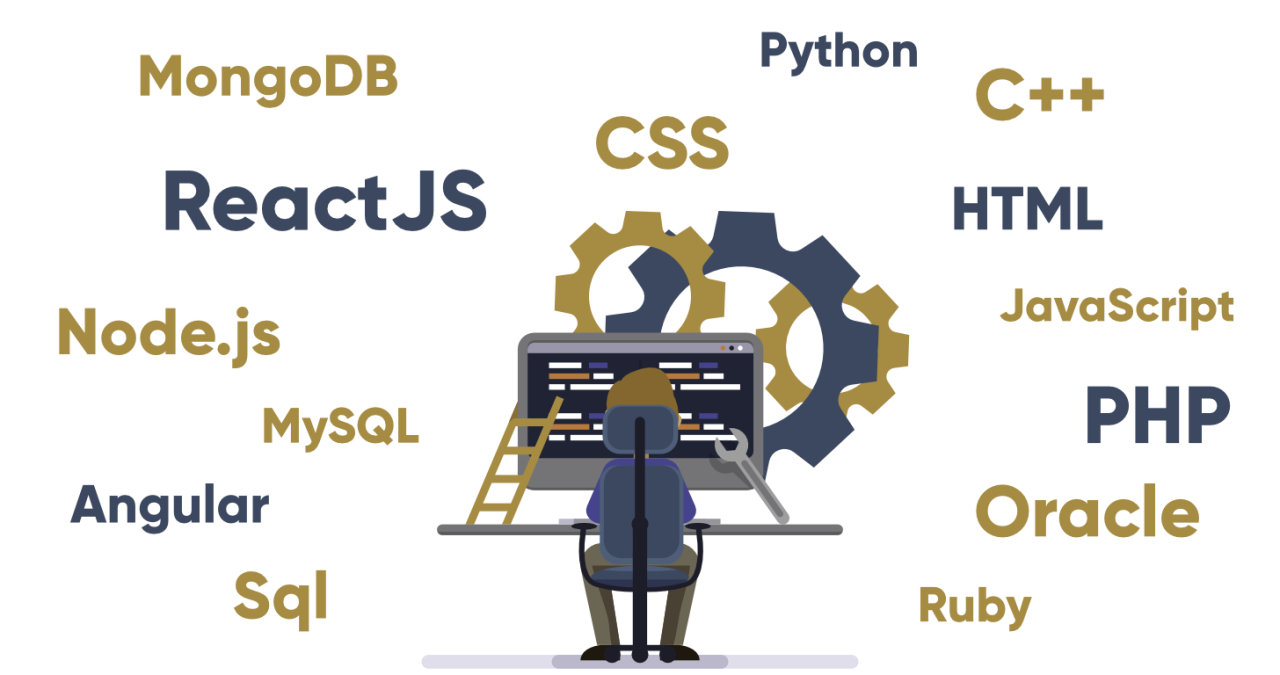
Prioritize user experience (UX) by designing intuitive and easy-to-navigate interfaces. Follow user interface (UI) design principles for consistency, visual appeal, and accessibility. Consider using design systems for a cohesive look and feel.
Responsive Web Design and Cross-Browser Compatibility
Responsive design ensures your application adapts to different screen sizes and devices. Cross-browser compatibility guarantees consistent rendering across various browsers. Testing on different browsers and devices is essential.
So you’re thinking about becoming a full stack developer? That’s awesome! It’s a demanding but rewarding career path. However, if you’re considering a change, maybe check out the surgical tech program admission requirements and prerequisites first – it might be a better fit for your skills and interests. Then, once you’ve decided on your path, you can focus on building your skills as a full stack developer or in another field.
Comparison of Front-End State Management Libraries
| Library | Description | Advantages | Disadvantages |
|---|---|---|---|
| Redux | Predictable state container for JavaScript apps | Centralized state management, easy debugging | Can add complexity to smaller projects |
| Zustand | Small, fast, and scalable state management solution | Simple API, minimal boilerplate | Less features compared to Redux |
| Vuex | State management pattern + library for Vue.js applications | Well integrated with Vue.js, easy to use | Specific to Vue.js |
Back-End Technologies for Full-Stack Developers
This section explores back-end programming languages, frameworks, databases, and API design principles essential for full-stack development.
Back-End Programming Languages
- Python: Known for its readability and extensive libraries, often used with frameworks like Django and Flask.
- Node.js: JavaScript runtime environment enabling server-side JavaScript development, often used with Express.js.
- Java: Robust and scalable language, used in enterprise applications with frameworks like Spring.
- PHP: Widely used language for web development, often used with frameworks like Laravel.
- Ruby on Rails: A framework emphasizing convention over configuration, promoting rapid development.
Back-End Frameworks and Use Cases
Frameworks provide structure and tools for back-end development. Examples include Django (Python), Express.js (Node.js), Spring (Java), Laravel (PHP), and Ruby on Rails (Ruby).
Database Technologies, Full stack developer
- SQL (Relational Databases): Structured data stored in tables with relationships (e.g., MySQL, PostgreSQL).
- NoSQL (Non-Relational Databases): Flexible data models suitable for large datasets and scalability (e.g., MongoDB, Cassandra).
Importance of API Design and RESTful Principles
Well-designed APIs are crucial for efficient communication between front-end and back-end components. RESTful principles (Representational State Transfer) guide the design of web APIs, ensuring scalability and interoperability.
Three-Tier Architecture Diagram
A typical three-tier architecture consists of a presentation tier (front-end), an application tier (back-end logic), and a data tier (database). The presentation tier interacts with the application tier, which in turn interacts with the data tier. Data flows between these tiers, with the application tier acting as an intermediary, processing requests and managing data access.
Version Control and DevOps for Full-Stack Developers: Full Stack Developer
Version control and DevOps practices are vital for efficient and collaborative software development. This section covers Git, CI/CD, and DevOps principles.
Importance of Version Control Systems (Git)
Git enables collaborative development by tracking changes to code, allowing developers to work concurrently and merge their changes seamlessly. It also provides a history of changes, facilitating rollback and debugging.
Common Git Commands and Workflows
Common Git commands include git clone, git add, git commit, git push, git pull, git branch, git merge, and git pull request. Workflows typically involve branching for feature development, merging changes, and using pull requests for code review.
Continuous Integration/Continuous Deployment (CI/CD)
CI/CD automates the process of building, testing, and deploying software, ensuring frequent and reliable releases. This reduces manual effort and improves the speed of development.
DevOps Principles in the Software Development Lifecycle
DevOps emphasizes collaboration between development and operations teams, aiming for faster delivery, improved reliability, and increased efficiency throughout the software development lifecycle.
Essential DevOps Tools and Technologies
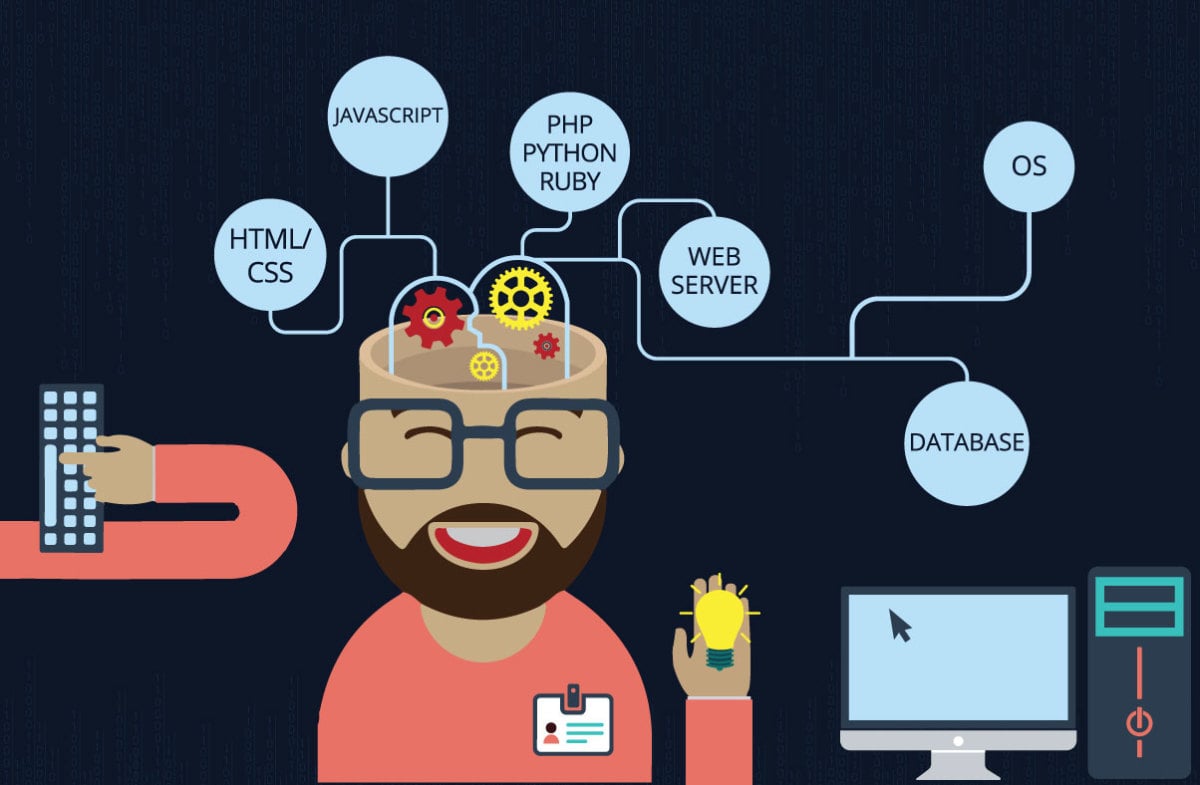
- Docker
- Kubernetes
- Jenkins
- AWS/Azure/GCP
- Ansible
Full-Stack Developer Career Paths and Trends
This section explores career paths, trends, and resources for continued learning in full-stack development.
Career Paths for Full-Stack Developers
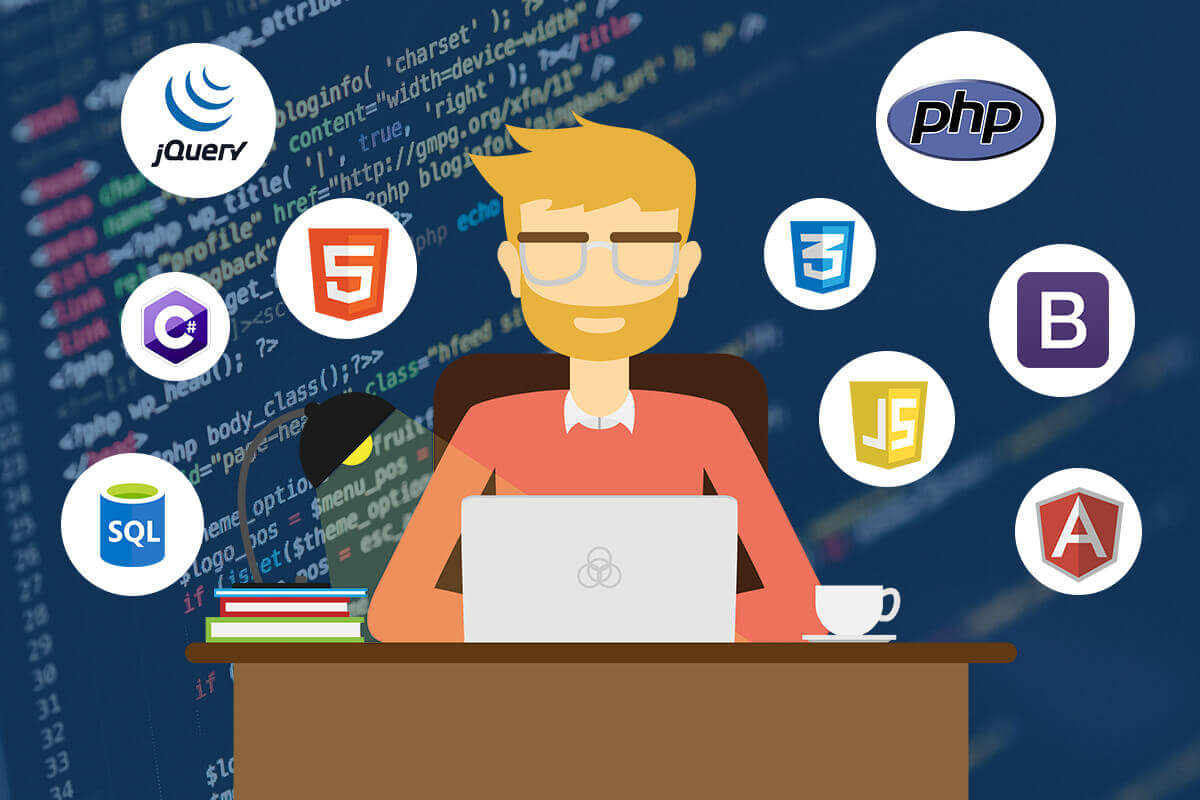
- Junior Full-Stack Developer
- Senior Full-Stack Developer
- Full-Stack Architect
- Technical Lead
- Software Engineering Manager
Current Trends and Future Outlook
The demand for full-stack developers remains high, with increasing focus on cloud technologies, microservices, and AI/ML integration. Specialization in specific areas (e.g., mobile development, data science) can enhance career prospects.
So you want to be a full stack developer? That means you’ll be handling everything from the front-end user experience to the back-end databases. Think about the scale – consider the implications of something like Apple to pay $95M to settle lawsuit accusing Siri of eavesdropping , and how a full-stack developer would be involved in securing user data and building robust systems.
It’s a big responsibility, but a rewarding career path for those who are up to the challenge!
Skills and Knowledge for Career Advancement
Continuous learning is essential. Developing expertise in specific technologies, mastering architectural patterns, and improving problem-solving skills are crucial for career advancement.
Resources for Continued Learning and Professional Development
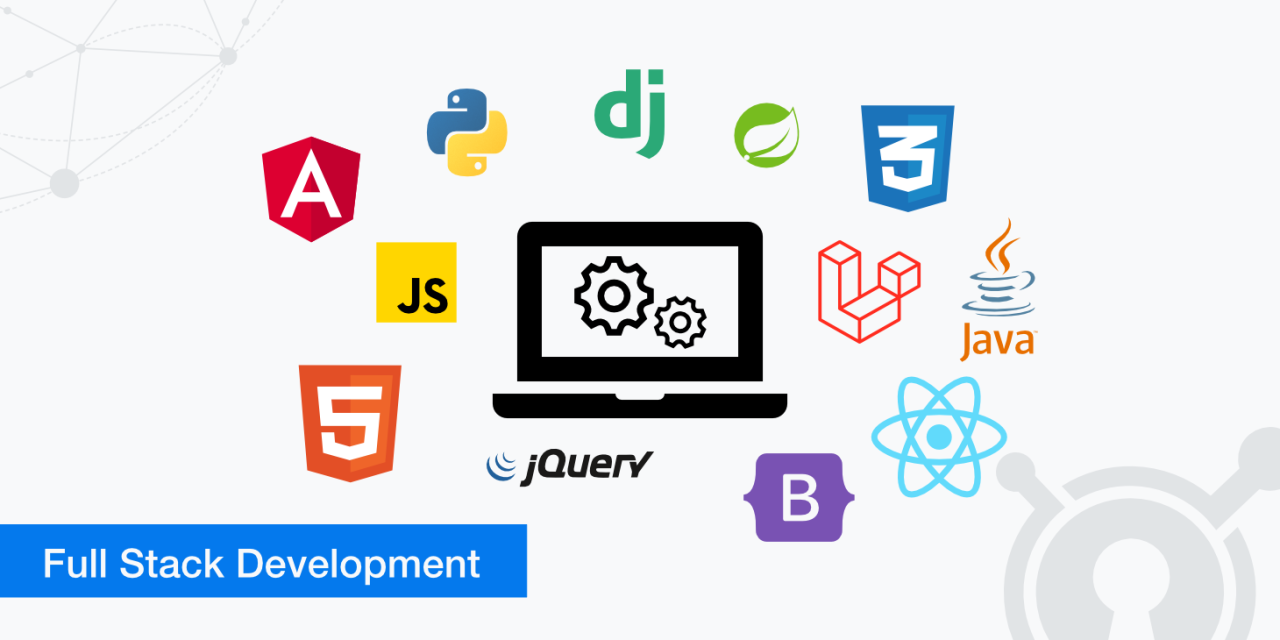
- Online courses (Coursera, Udemy, edX)
- Bootcamps
- Conferences and workshops
- Open-source contributions
Relevant Certifications
- AWS Certified Developer
- Google Cloud Certified Professional Cloud Architect
- Microsoft Certified: Azure Solutions Architect Expert
- Various vendor-specific certifications for specific technologies (e.g., React, Angular, Node.js)
Final Conclusion
Becoming a proficient full-stack developer requires dedication and continuous learning, but the rewards are immense. The ability to build complete web applications from concept to deployment is a highly sought-after skill, opening doors to diverse and exciting career opportunities. This exploration provided a foundational understanding of the key technologies, methodologies, and career paths within this dynamic field. Embrace the challenge, and you’ll be well on your way to mastering the art of full-stack development.
Detailed FAQs
What’s the average salary for a full-stack developer?
Salaries vary greatly depending on experience, location, and company size, but generally range from a comfortable living wage to quite high, especially with experience.
How long does it take to become a full-stack developer?
There’s no set timeframe. It depends on prior experience, learning style, and dedication. Some individuals learn the basics within months, while others may take years to achieve mastery.
Which full-stack specialization is best for beginners?
The “best” specialization depends on your interests. MERN (MongoDB, Express.js, React, Node.js) is a popular and relatively approachable stack for beginners due to its JavaScript-centric nature.
Is it necessary to master every technology in the stack?
No, you don’t need to be an expert in every single technology. Focus on building a strong foundation and developing expertise in a few key areas. You can always expand your skillset over time.
